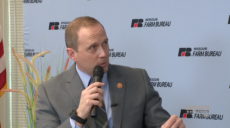As our country deals with inflation and shrinking household budgets, there are lawmakers and monied special interest groups that want to make it easier for utility companies to raise rates and to do so faster than ever. Not to mention, they want to raise rates to make power the utilities don’t even need.
Under both HB 1684 and SB 969, respective sponsors Rep. John Black (R-Marshfield) and Sen. Eric Burlison (R-Springfield) introduce a ratemaking accounting method known as Construction Work in Progress. CWIP, as is the common shorthand for this tool, allows electric utilities regulated by the Public Service Commission to seek ratepayer compensation for power plants that are not yet built and not yet used to generate power. In fact, utilities can use CWIP to charge ratepayers for contemplating the construction of a power plant. Voters outlawed this practice all the way back in 1976, but the Missouri Legislature, known to loathe citizen-led initiative petitions, believes democracy has a “sold-by” date and the time has come to overturn the will of the electorate.
In reading the proposed law, there’s nothing that specifies this benefits nuclear power more than any other source of energy generation. However, CWIP is seen by many in the utility world as the primary way to fund the construction of nuclear power. This is because the bankers and investors that fund utility capital projects see nuclear power as too risky. These same investors have concluded wind and solar, thanks to rapidly-improving technology, show a promising rate of return not just for their money but for society as a whole.
These investors have seen the disaster CWIP has been in other states, and the Show-Me State would benefit from learning about this as well. In South Carolina, ratepayers forked over $9 billion before the project was eventually canceled and saw utility executives go to prison for lying to shareholders and regulators. The only project moving forward is in Georgia, where two nuclear reactors under construction are at least five years behind schedule while the price tag has ballooned to $28.5 billion, more than twice the original estimate. This project is only moving forward because of more than $12 billion in taxpayer-funded loan guarantees. Meanwhile, “small modular reactors” will not be commercially viable until 2029 at the earliest.
Supporters of nuclear power, which includes insurance company Farm Bureau, see adopting CWIP as the only way to make sure their preferred energy source has any shot of competing in a marketplace that already has an endless supply of government-backed safeguards. Make no mistake, CWIP is a subsidy for nuclear power. Moreover, it is a subsidy for nuclear power that does not apply fairly to all Missourians. Only customers of Ameren, Evergy, and Liberty-Empire would have to pay this subsidy. Black’s legislative district only contains rural electric cooperative and municipal utility customers. His constituents will feel none of the rate increases promised by CWIP. Burlison has a number of Liberty-Empire customers in his Senate district, but that utility has made a commitment to run entirely off wind and solar in the very near future because that utility knows a common-sense approach to the modern grid.
Point-being, this change in the law is being pushed by lawmakers whose districts will face no consequences as a result. It will fall to customers who are already being hit with massive disconnection rates and rate increases that happen every three years.
Proponents of CWIP will argue nuclear is more reliable than forms of renewable energy. But let’s look at Ameren’s Callaway plant just north of the state Capitol. The only commercial nuclear power-generating plant in the state, it experienced unplanned shutdowns for nearly a month three times in 2020. It was shut down for more than six months in 2021, including the polar vortex when the grid was being strained due to massive natural gas failures. Callaway started 2022 with an unplanned shutdown too. These closures do not include the planned shutdown scheduled every 18 months. Such shutdowns are necessary given the volatility of nuclear and are largely ignored by proponents. Certainly, the downtime of this plant does not make it reliable.
Utility companies have all sorts of options in producing power, and we all are aware they have plenty of ways to raise rates. There is no reason for the legislature to provide another opportunity to needlessly dig into ratepayers’ pocketbooks.

James Owen is the executive director of Renew Missouri.










